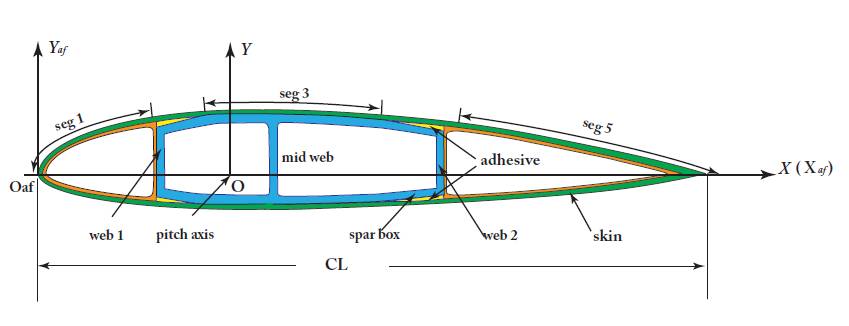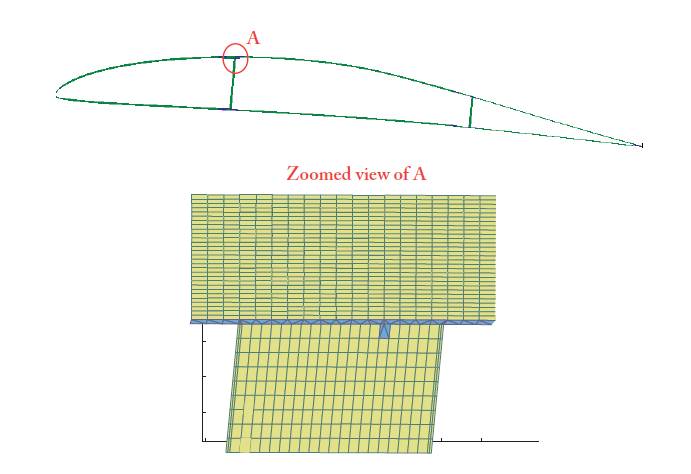 PreVABS is a design-driven preprocessing computer program that effectively generates your high-resolution finite element modeling data for VABS. It has the capability of modeling your sophisticated cross-sectional configurations for various composite helicopter rotor blades, wind turbine rotor blades, and aircraft wing structures. Most importantly, it has the merit of reducing dramatically your intensive modeling efforts for generating 3D finite element analysis (FEA) model which is either time consuming or impractical especially during the preliminary and intermediate design phases. Please contact us today for a free trial version.
PreVABS is a design-driven preprocessing computer program that effectively generates your high-resolution finite element modeling data for VABS. It has the capability of modeling your sophisticated cross-sectional configurations for various composite helicopter rotor blades, wind turbine rotor blades, and aircraft wing structures. Most importantly, it has the merit of reducing dramatically your intensive modeling efforts for generating 3D finite element analysis (FEA) model which is either time consuming or impractical especially during the preliminary and intermediate design phases. Please contact us today for a free trial version.
See the VABS Product Brochure for details about VABS features and capabilities.
How Can PreVABS Help You?
In contrast to most currently available rotor blade modeling tools, PreVABS, along with its analysis engine VABS, offers you the following features for high-fidelity modeling of sophisticated composite rotor blades:
- Automatically generates your high resolution finite element meshes directly from CAD geometric data and lamina schema, dramatically reduces the primary design schedule
- The finite element modeling is accurate up to each individual composite layer, and complete 3D material and structural information are calculated and kept for VABS analysis to provide you the most accurate cross-sectional analysis
- Models your composite blades or wings with hundreds of layers
- Models your sophisticated configurations for composite blades or wings, including both relatively flat and highly curved airfoil profiles, arbitrary web position and web titling angles, and both span-wisely and chord-wisely varying lamina schema
- Provides you visualization for the finite element model, rigorous check of model, and user-friendly warning and error messages, generating robust and accurate modeling outputs and providing a very convenient and quick way to correct and modify the design data
Unique Technology
PreVABS is a design driven pre-processing computer program which can effectively generates high-resolution finite element modeling data for VABS by directly using design parameters such as CAD geometric outputs and both the span-wisely and chord-wisely varying composite laminate lay-up schema for rotor blade and aircraft wing cross-sections. A typical comprehensive blade strength/dynamic/aeroelastic analysis process for rotor system or aircraft flight simulations during the various design stages requires realistic cross-sectional properties of rotor blades or wing structures. In addition to rotor system dynamic analysis and aeroelastic (dynamic stability) analysis, information on stress/strain distributions at critical blade sections sometimes becomes vary valuable for designers to evaluate blade strength. This can be achieved by recover the 3D stress/strain fields based on the global behavior obtained from the 1D nonlinear aeroelastic/dynamic analysis.
Beginning with the blade design configuration, PreVABS automatically models the complex cross-sectional configurations with mixed quadratic and triangular meshes based upon a few design parameters such as airfoil geometry, web positions and titling angles and chord-wisely varying composite laminate lay-up schema. The finite element modeling process is accurate up to each individual composite layer and the complete 3D structural and material information such as ply orientation, fiber orientation and ply thickness are calculated and recorded for each element. The VABS program is then used to analyze these data to obtain multiple span-wisely distributed sectional properties including structural properties (tension center/neutral axis, centroid, elastic axis/shear center, shear correction factors, extensional/torsional/bending/shearing stiffness, principal bending axes pitch angle, modulus weighted radius of gyration) and inertia properties (center of mass/gravity, mass per unit span, mass moments of inertia, principal inertia axes pitch angle, mass weighted radius of gyration). These span-wisely distributed inertial and stiffness data, combined with aerodynamic loads and boundary conditions, are fed to aeroelastic analysis tools.
PreVABS Manual and Documentation
Additional information related to PreVABS use and development is available through the following manual:
 |
|
 |
 |







